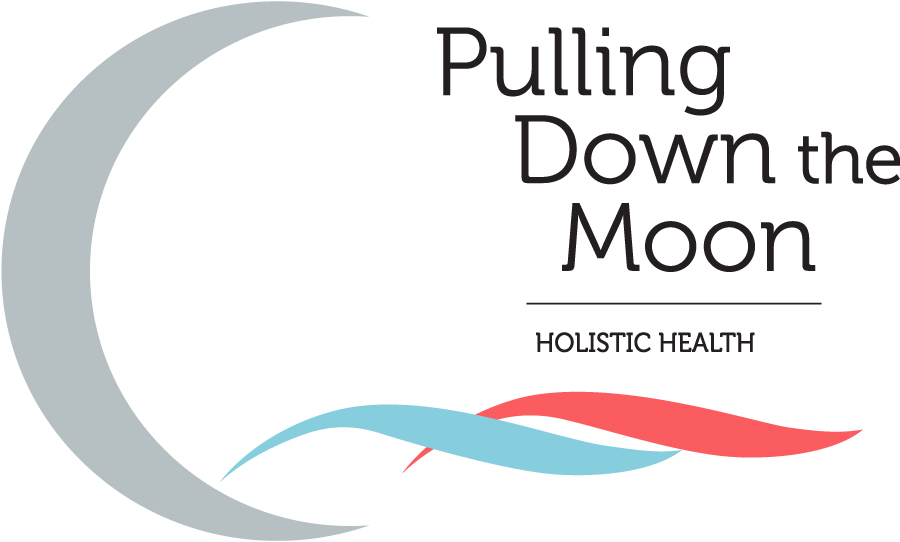Fertility Rate by Race: How Ethnicity May Impact Fertility

The Centers for Disease Control and Prevention (CDC) reports that 13.4 percent of women in the United States have “impaired fecundity” or fertility struggles.¹ That represents about 9.7 million women who are undergoing real struggles trying to grow their families. Let’s meditate on these numbers and what they mean for just a moment. Statistics can be… confusing at best, and misleading at worst. While these numbers represent real people and real struggles, do these numbers provide a clear representation of who these women are by race and ethnicity? And what do we mean when we use those terms? When we talk about the fertility rate by race and ethnicity, we uncover more layers of complexity in the already complex world of people trying to conceive (TTC). At Pulling Down the Moon, we understand that there are deep nuances in care needs across our community, especially for Black, Indigenous, and People of Color (BIPOC) community members who need help overcoming fertility conditions. We constantly strive to create an inviting, inclusive atmosphere where everyone going through the TTC journey feels safe, welcome, and nurtured.
Understanding Differences in Fertility Rate by Race
To understand fertility rates by race and ethnicity, it’s important to define what we mean by race and ethnicity.
- Race is a biological concept connected to physical and genetic traits like skin color.
- Ethnicity refers to the expression of cultural backgrounds.
Race (biology) and ethnicity (culture), individually and together, affect our experiences and outcomes when dealing with healthcare of any kind, and certainly when it comes to fertility. So, when we examine statistics to try and understand questions like, for example, what race is the most fertile, or what are the success rates for IVF by race, it’s important to understand these numbers through a multifaceted kaleidoscope lens that takes things like cultural stressors, media bias, income disparities, healthcare insurance coverage gaps, and systemic racism into account. Also, remember that numbers represent sample sizes of populations and do not always accurately reflect every individual member of that population. In other words, if you identify with a certain race or ethnicity, it doesn’t necessarily mean you will automatically have a certain health condition just because you are of that race or ethnicity.
What Do Fertility Rates Reveal About Racial and Ethnic Groups?
A very recent study delved into the number of people seeking fertility services through disciplines such as reproductive endocrinology and urogynecology. It analyzed anonymized data of 29,821,148 patients.² This data was compared with the most recent US Census data. The findings concluded that of those patients:
- 80.5 percent were White
- 6.6 percent were Black
- 4.9 percent were Hispanic
- 3.3 percent were Asian
Keep in mind that, according to the latest Census data,³ racial groups represented in the United States break down into these rough percentages:⁴
- 58.9 percent are White
- 12.6 percent are Black
- 19.1 percent are Hispanic
- 6.1 percent are Asian
Yet another recent study found that, based on the National Health and Nutrition Examination Survey data collected between 2013 and 2016, women of all races and ethnicities reported infertility problems almost equally, or in such a way that would line up with Census numbers more evenly.⁵ So, why the disparity?
Factors That Influence Fertility Rates Across Races

This and other studies identify several factors that contribute most to the disparity. First, race and ethnicity themselves seem to be factors, but a third factor that figures heavily into the equation is socioeconomic status.⁶ That different racial and ethnic groups in the United States encounter hurdles to infertility care based on their socioeconomic status and systemic racism is a hot topic of discussion, and one that we here at Pulling Down the Moon talk about often in our efforts to make sure we break down barriers to care so that women and men who need infertility care can receive it.
But race, ethnicity, and socioeconomic status are not the only things that can impact infertility and women (and men) of color.
Some genetic predispositions can also impact fertility, and some of these genetic fertility conditions are more common in people with certain racial backgrounds. Also, ethnic traditions and cultures can impact stresses, stigmas, and even nutritional intake for people, which may also affect fertility. See how complicated it is? Nevertheless, our holistic fertility centers in Chicago and Highland Park are dedicated to helping you, through all the complexities of life, to receive the care you need on your fertility journey.
Understanding Fertility Challenges for Women of Color
Before we dive into some of the facets of fertility challenges for women of color, we want to stress that there is yet another disparity that we haven’t touched on in this discussion: Gender. Women and men also have entirely different inequalities when it comes to working with fertility challenges. Across many cultures, women have borne the burden of infertility because they are the ones who give birth. Research, however, shows that infertility situations come from the men’s side just as often.⁷ And yet, a majority of established scientific research on infertility has focused on women. Although male infertility studies are increasing, the gender disparity in scientific research about infertility still exists. In addition, there are at least five more multifaceted lenses we need to use to evaluate fertility rate by race research efforts:
1. Socioeconomic Barriers and Limited Healthcare Access
Socioeconomic factors were one of the main barriers that 400 survey Black, Indigenous, and People of Color (BIPOC) people reported as they responded to a study survey in New York City and Los Angeles, California.⁸ Inadequate levels of healthcare, and lower-quality healthcare disproportionately affected BIPOC members of these communities. If they can’t access the care because it’s too far away, transportation is unreliable, the care is unaffordable, or inadequate, members of the BIPOC community struggle to get clear diagnoses or treatment for infertility, which can explain some of the earlier statistics. It's not that BIPOC people don't have the same conditions as others, likely at similar rates, it's just that socioeconomic conditions make it harder for them to access the same level of care in more affluent areas.
2. Implicit Bias and Racial Disparities in Medical Care
Implicit bias is having a subconsciously negative attitude toward a different social group from your own. Studies show that implicit bias plays a significant role in whether or not BIPOC folks get the care they need at equal levels to White women. One study in particular compared referrals for PCOS treatment between racial groups. 84 percent of the White women in the study group were referred for treatment by a doctor. By comparison, BIPOC women were far more likely to be self-referred for infertility care than to be referred by a doctor.⁹ The additional stress of battling with this implicit bias and lack of support may further complicate infertility stress on BIPOC women in their fertility journey.
3. Cultural Stigma and Misunderstandings
The same study that illustrated implicit biases BIPOC women face in the healthcare system when seeking care for PCOS also highlighted the cultural stigma associated with infertility. Although the social stigma exists across ethnicities, it was considerably higher among Asian women and Black women than White women. Chinese American women particularly suffered from this “culture of silence” around infertility issues and reproductive health in general.¹⁰ And we know that when people don't talk about things openly, misunderstandings about the proper type of care can get in the way of TTC.
4. Disparities in Diagnosis and Treatment of Fertility Issues
The following diagnosis disparities from recent research make clear that socioeconomic and implicit bias disadvantages that many BIPOC women face need to be taken into account when viewing any of the following numbers:
- Success rates for IVF by race—Some studies have indicated that Black women and Asian women have experienced lower IVF success rates than White women, with live birth rates from IVF coming in at¹¹ 30.7 percent for White women, 16.9 percent for Black women, 24 percent for Asian women, and 28.5 percent for Hispanic women.
- Uterine Fibroids—Studies indicate that Black women might be two to three times more likely to receive a diagnosis of uterine fibroids, but the actual cause behind this difference has not been established.¹² More research is needed to verify the outcomes of this particular study and to investigate possible reasons.
- Endometriosis—An older study¹³ indicated that White and Asian women had higher diagnoses of endometriosis than Black or Hispanic women. Reasons could range from access to health care leading to lower diagnosis rates, but again, more research is needed.
- Polycystic Ovary Syndrome (PCOS)—The most recent study on race, ethnicity, and socioeconomic factors affecting PCOS diagnoses was especially interesting in its demonstration that more research is required. Black women and White women in the study who had similar BMIs had about the same rates of PCOS, however, one aspect of the study compared Black and White women living in Alabama with Black and White women living in California and found that both sets of women living in Alabama had higher rates of PCOS. They hypothesized that income levels and culturally based nutrition differences may have a bigger role to play in this case.¹⁴
So, the truth here is that we’re still trying to untangle what some of these fertility rate by race statistics even mean, let alone answering the question “what race is the most fertile,” but a clearer picture is emerging that the perceived racial disparities that may previously have been attributed to things like genetics may actually have a stronger thread with socioeconomic and healthcare biases, as we will continue to untangle below.
5. Lack of Representation in Fertility Studies and Support Networks
Remember that implicit bias means more White women are referred by health professionals to participate in further infertility treatment and research than BIPOC women. This means that BIPOC women often have to go through extra steps to self-report, infertility struggles. So, it follows that the research and numbers we see may be off.
Addressing Fertility Support Gaps for Women of Color
Healthcare providers and researchers must take a closer look and grapple with the disparities we have discussed here. We need to actively work toward inclusivity and balanced representation in future studies to achieve more accurate results and to provide more equitable fertility care. Until then, those of us in the
fertility services community must do all we can to foster an inclusive, supportive community approach to supporting all women and men who need help overcoming infertility. At Pulling Down the Moon we are keenly aware of these disparities and working hard within our own sphere to create that inclusive, supportive environment where women and men of all races and ethnicities can receive the respectful, equitable, affordable, accessible, compassionate support they deserve.
Pulling Down the Moon Embraces an Inclusive Approach to Reproductive Health
If you are looking for that supportive, inclusive community, schedule a consultation with Pulling Down the Moon today and learn about all the various holistic fertility services we provide, including fertility yoga classes and fertility massage therapy. We are also excited to announce that we are expanding our fertility support community with our new Fully Fertile App! This app reaches across boundaries and is part of our mission to extend fertility service to the broader community. You can download it here and join our community, chat with others going through the same journey, and get essential education and resources to help you grow your family. Schedule an appointment with us today—you are welcome here!
References
- FastStats - Infertility. (2019). National Center for Health Statistics. https://www.cdc.gov/nchs/fastats/infertility.htm
- Roshong, A., Rosalik, K., Carson, S., Spilman, L., Luizzi, J., Plowden, T., & Pier, B. D. (2024). Race and ethnicity expression in reproductive endocrinology and infertility research studies compared with other obstetrics and gynecology subspecialty studies. F&S Reports, 5(3), 304–311. https://doi.org/10.1016/j.xfre.2024.06.001
- United States Census Bureau. (2021, August 12). Racial and Ethnic Diversity in the United States: 2010 Census and 2020 Census. Census.gov. https://www.census.gov/library/visualizations/interactive/racial-and-ethnic-diversity-in-the-united-states-2010-and-2020-census.html
- USA facts. (2022). US population by year, race, age, ethnicity, & more. USAFacts. https://usafacts.org/data/topics/people-society/population-and-demographics/our-changing-population/
- Kelley, A. S., Qin, Y., Marsh, E. E., & Dupree, J. M. (2019). Disparities in accessing infertility care in the United States: results from the National Health and Nutrition Examination Survey, 2013–16. Fertility and Sterility, 112(3), 562–568. https://doi.org/10.1016/j.fertnstert.2019.04.044
- Pérez-Stable, E. J., & Webb Hooper, M. (2023). The Pillars of Health Disparities Science—Race, Ethnicity, and Socioeconomic Status. JAMA Health Forum, 4(12). https://doi.org/10.1001/jamahealthforum.2023.4463
- Cleveland Clinic. (2023, April 19). Infertility: Causes & Treatment. Cleveland Clinic. https://my.clevelandclinic.org/health/diseases/16083-infertility
- Caballo, B., Dey, S., Prabhu, P., Seal, B., & Chu, P. (2021). The Effects of Socioeconomic Status on the Quality and Accessibility of Healthcare Services. Across the Spectrum of Socioeconomics, 1(4). https://doi.org/10.5281/zenodo.4740684
- VanHise, K., Wang, E. T., Norris, K., Azziz, R., Pisarska, M. D., & Chan, J. L. (2023). Racial and ethnic disparities in polycystic ovary syndrome. Fertility and Sterility, 119(3), 348–354. https://doi.org/10.1016/j.fertnstert.2023.01.031
- Gerrits, T., Kroes, H., Russell, S., & van Rooij, F. (2023). Breaking the silence around infertility: a scoping review of interventions addressing infertility-related gendered stigmatisation in low- and middle-income countries. Sexual and Reproductive Health Matters, 31(1). https://doi.org/10.1080/26410397.2022.2134629
- Quinn, M., & Fujimoto, V. (2016). Racial and ethnic disparities in assisted reproductive technology access and outcomes. Fertility and Sterility, 105(5), 1119–1123. https://doi.org/10.1016/j.fertnstert.2016.03.007
- VanHise, K., Wang, E. T., Norris, K., Azziz, R., Pisarska, M. D., & Chan, J. L. (2023). Racial and ethnic disparities in polycystic ovary syndrome. Fertility and Sterility, 119(3), 348–354. https://doi.org/10.1016/j.fertnstert.2023.01.031
- Missmer, S. A. (2004). Incidence of Laparoscopically Confirmed Endometriosis by Demographic, Anthropometric, and Lifestyle Factors. American Journal of Epidemiology, 160(8), 784–796. https://doi.org/10.1093/aje/kwh275
- VanHise, K., Wang, E. T., Norris, K., Azziz, R., Pisarska, M. D., & Chan, J. L. (2023). Racial and ethnic disparities in polycystic ovary syndrome. Fertility and Sterility, 119(3), 348–354. https://doi.org/10.1016/j.fertnstert.2023.01.031
Meet Beth Heller
Beth Heller is a co-founder and co-director of Pulling Down the Moon, Inc., where she specializes in Integrative Care for Fertility (ICF). With a Master's Degree in Human Nutrition and Dietetics, she previously worked as a Nutrition Researcher on an NIH-funded study before discovering the powerful connection between mind and body through yoga. Beth's journey into yoga began in 1998, helping her regain her reproductive health, and she later delved into deeper practices, including meditation and breathwork. Despite experiencing the loss of a stillborn daughter, Beth found solace in yoga's ability to provide inner stability and hope. She co-founded Pulling Down the Moon and continued her personal fertility journey, eventually welcoming two sons. Beth's mission is to share the tools of yoga and traditional healing therapies with others facing fertility challenges, and she is an active member of relevant professional organizations while teaching yoga in the Chicago area.
Share on Social
Discuss With Us
Our Latest Resources






